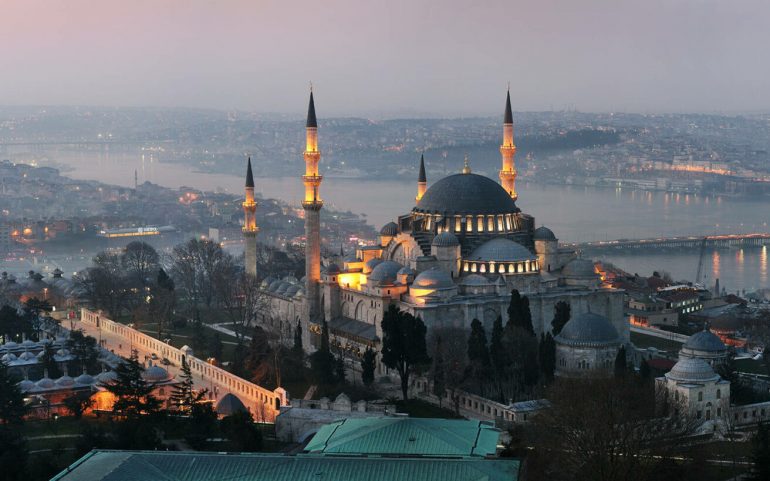In his voyage "Istanbul and Istanbul, old and new", the important traveler HG Dwight writes in 1915: "Istanbul is a compromise, therefore not always successful".
He did manage to summarize in one sentence the whole turbulent and tumultuous history of the city, which today left it a real compromise, a melting pot of peoples, cultures and religions.
Metropolis as it was from time immemorial, remains its economic and cultural center Turkey, a densely populated and multicultural city always maintaining its main feature as a crossroads of Asia and Europe.
Istanbul carries within it its sometimes famous and sometimes blood-stained history, as humanity fought for its eyes from a very early age.
And the battles were such that the City was destroyed and rebuilt many times.
Before going down in history as the largest and richest city in Europe for 8 centuries (5th-13th), having its walls inviolable for almost 900 years…

Right in the innards of the Horn Bay, in its straits Bosporus, Byzantium found the ideal location to establish Byzantium (or Byzantium), the Greek colony of Megara in Asia Minor around 658 BC.
According to Pliny the Elder, in fact, the location was known from ancient times and was called Lygos. Strabo asserts that it was the mythical ancestor of Megara who founded it, during the years of the second great Greek colonization (8th-6th century BC), obeying an oracle of Oracle of Delphi.
Pythia typically called the Megarians "blind", who went and founded a city (Chalcedon) on the Asian shores of the Bosphorus 18 years ago, losing the ideal geostrategic point just opposite!
Byzantium returned and founded what was to become one of the most important cities of the universe in the centuries to come. Byzantium was to experience great but also difficult times.
Pausanias states that the city developed rapidly, was walled up and occupied lands on the Asian coast, being according to the Greek traveler one of the best fortified cities of antiquity.

During the Ionian Revolution (499-494 BC) it returned to Greek hands, as it did after the end of the Persian wars, which came to power under the Spartan general Pausanias, its triumphant Battle of Plataea. Before the Athenians expelled him and included her in the Delian Alliance.
He was also present in the Peloponnesian War, passing from the Athenians to the Spartans and back again. Byzantium wanted it and Philip II, however, did not manage to conquer it despite the siege.
The Byzantines eventually allied with Alexander the Great and maintained a privileged status of autonomy. Which they did not lose by keeping the fragile balances between the descendants of the Macedonian recruiter.
From 279 BC. however, they paid a heavy tax to the Galatians
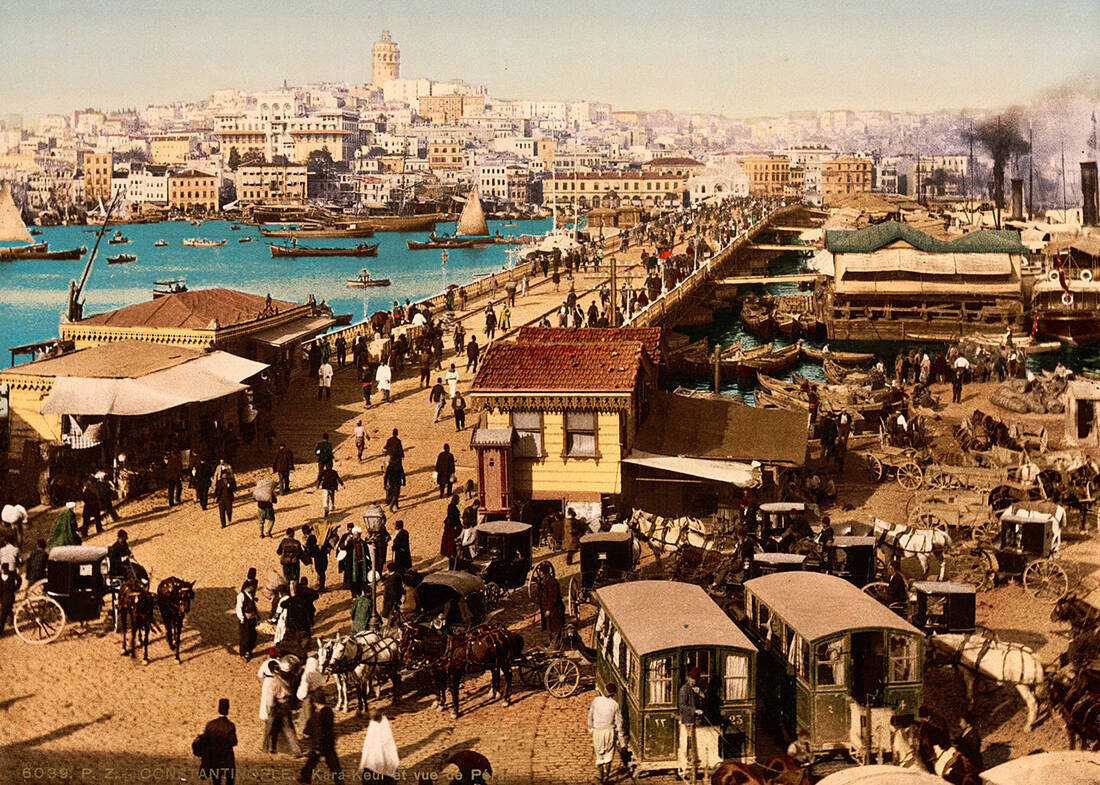
The Byzantium managed to retain many of its historical privileges during the Roman era. Pliny the Younger even mentions that the emperor Trajan completely exempted him from many contributions, although the privileged regime would end under Vespasian.
Byzantium was in the years of the ninth emperor another Roman province. We find it again a little later, in the Roman civil war between Septimius Severus and Pesceni Niger, when it was besieged and conquered by the first (196 AD), after a three-year battle and its complete destruction.
Of course, Augustus Severus would not leave the city of sensitive geostrategic importance flat. After severely punishing the inhabitants who had sided with his opponent, he undertook an extensive reconstruction of Byzantium.
Such a radical reconstruction that was to be completed by his son, Antonino. The new city walls were much better, but also doubled in size. Now it had baths, a theater, a carousel, and even a headquarters.
Severus named the city Augusta Antonina, in honor of his son. Despite the fact that Valerian's son, Gallienus, destroyed part of its fortifications and was attacked many times by enemy tribes, such as the Goths, the city was always alive.

It was another civil unrest in Roman Empire, this time the battles of Flavius Valerius Constantius' son with the emperors Maxentius and Licinius that would bring Constantine I to Byzantium. That is, when he defeated Licinius in Chrysoupoli and the latter took refuge in the city for safety.
Constantine besieged and captured it in September 324 AD. He was also impressed by its natural talents and its geopolitical significance, and thus made it its capital. Istanbul was just born.
Constantine the Great expanded its borders and gave it such magnificence that at the official inauguration of the city, in May 330 AD, he even called it "New Rome" (Nova Roma)!
The historian Socrates the Scholastic even tells us that the name New Rome was not at all symbolic, as it was secured by imperial decree. Although it would not prevail in the end.
The city was six times larger than its historical boundaries and had its own Senate, administrative buildings, palace buildings, baths, hippodrome and the glorious Augustaion.

Constantine even brought to his capital the Trikarinos Ofi, the Tripod of Plataea who was in Delphi honoring the fallen in the historic battle. Majestic and sparkling, Istanbul was already a melting pot.
It had churches but also old pagan temples. It had Roman buildings, but also classical architecture. It was indeed a New Rome, in terms of awe and wealth. A New Rome whose dynamics could not be stopped. The city was constantly growing and evolving into a real center of the empire.
Ancient Byzantium would have lived glorious moments in its Roman history for more than 1.000 years. Even when other parts of the empire would collapse.
The eastern capital of the Roman Empire would become the capital of the (Eastern Roman) Byzantine Empire from the end of the 5th century, surviving until the middle of the 15th century.
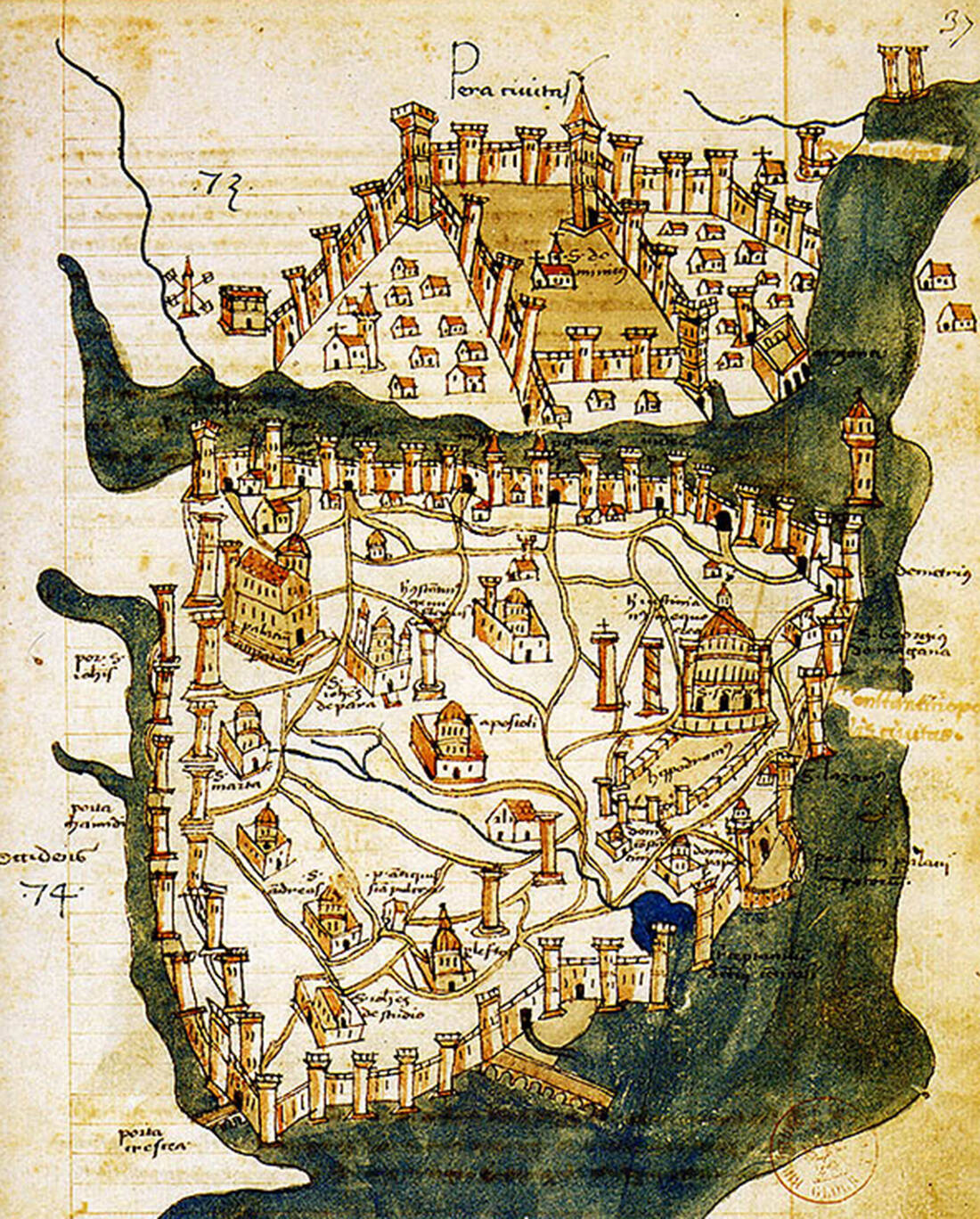
Constantinople will historically be known as the seat of the Eastern Roman Empire.
The famous Eptalofos, the Queen, is firmly established by the Byzantines, which even offer free bread (panes aedium) to citizens who decide to settle there.
In the Byzantine years, the increasingly Christian Constantinople not only experienced an unprecedented population explosion, but also an overflowing grandeur.
The city, as it began to be called as early as the 5th century, became synonymous with urban prosperity, a real melting pot of customs and art, West and East.
During the reign of Theodosius II, it expanded even more, knowing an incomparable development that was to become even more impressive in the years of Justinian I. Justinian the Great also founded the timeless symbol of the city, the Hagia Sophia.
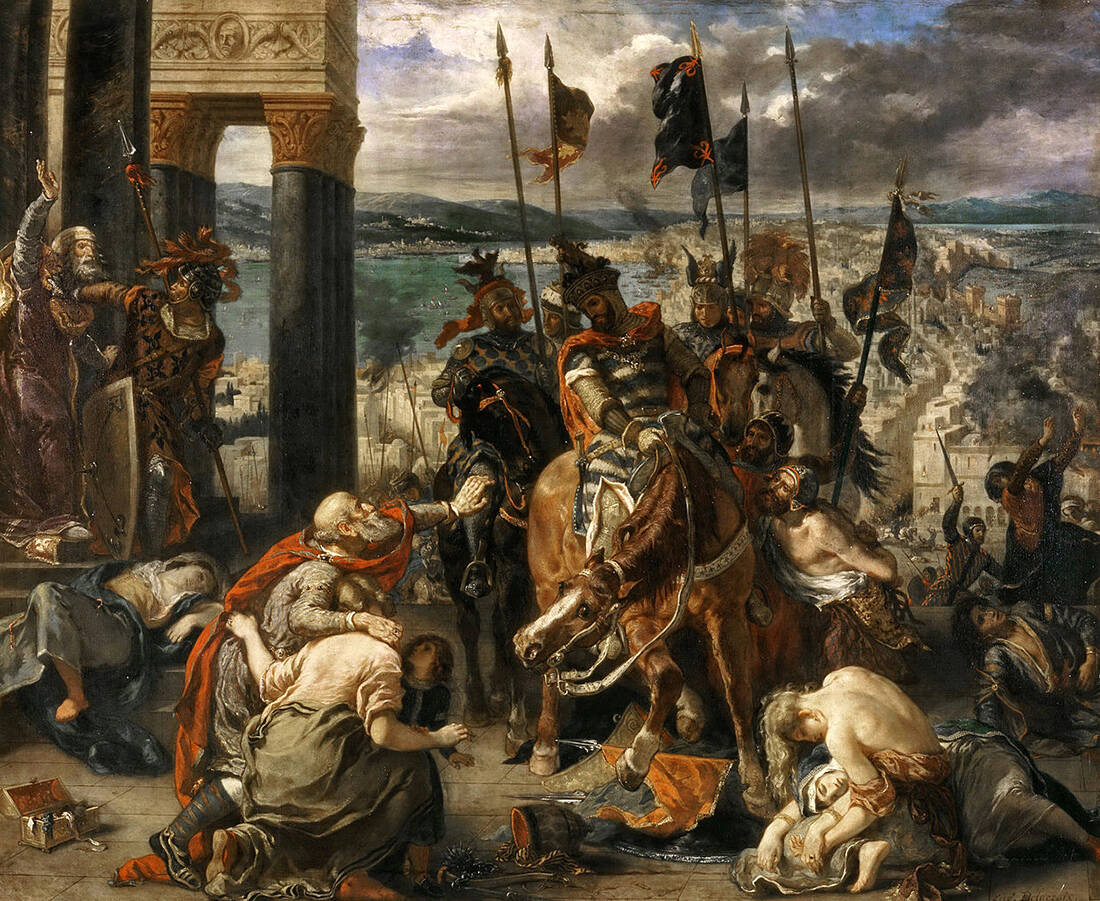
A unique contradiction in its Byzantine heritage, the short-lived passage in the hands of the Latins in 1204. The Latin Empire (Latin Empire of Constantinople), created by the Crusaders of the Fourth Crusade until 1261, left a very heavy mark on the city.
It was an unprecedented looting of Istanbul, which took years to complete. Flemish Baldwin was the new emperor who ascended the throne of the Queen, inaugurating its most destructive period.
When it was rebuilt in 1261 by Michael VIII Palaiologos, it had to be rebuilt. Istanbul changed face once again, only it would not be the last.
The Palaeologans were unable to restore it to its former glory, the empire was now weakened and was constantly shrinking. The decline brought about by the Latins, combined with the weakening of the Byzantines, political instability and civil strife, deprived her of the jealous character she had for centuries.
Even so, owning one is still beyond the reach of the average person walls of (Theodosian) kept her alive from the attacks. By April 1453 at least…

The siege of Constantinople by the youngest Mohammed II took place after 7 weeks. Its impregnable walls could not save her. The fall of May 29, 1453 he was coming to transform the City once again.
The Ottoman sultan found Constantinople with just 50.000 inhabitants, perhaps fewer, where it once burst into life and had a population of 500.000.
Like his Byzantine predecessors, he wanted to see it full again. However, he did not give privileges, but ordered more than 5.000 families (surgunides) to settle here by force.
Its grandeur, another grandeur, would be rediscovered by the city a century later. It was the tenth sultan, Suleiman the Magnificent, the one who would decide to restructure the City in a way that is now inspired by the principles and spirit of Islam.
He sought the character of a holy Muslim city for Constantinople and achieved this with a multitude of majestic mosques, palaces and religious buildings. The Topkapi and the famous Suleymaniye Mosque were built in his time.
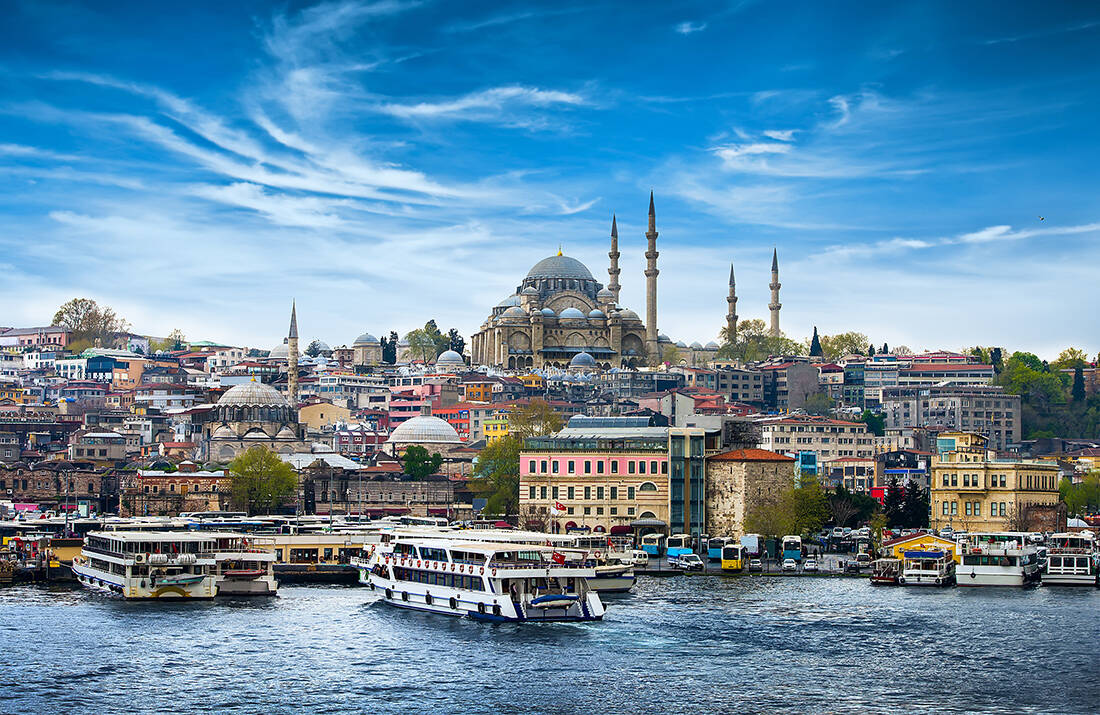
Suleiman endorsed its heyday in the Ottoman years, with a comprehensive settlement and reconstruction program that once again reached half a million inhabitants.
The status of splendor could not but be maintained by Istanbul in the years to come. It was, after all, the capital of a state empire, an imposing and enviable city. Although completely different from what the Byzantines once knew.
Even the Ottomans however they never thought of changing her name. For this to happen, his Neo-Turks would have to come Kemal in things in 1908, to dethrone the last sultan and capture the City.
"City" was called by everyone from the 5th century, a term that had prevailed more widely until the 10th century. "Bulin" was typically written by Arab geographers. The only ones who called it "Istanbul" were the Seljuks, who also used the Greek "in the City".
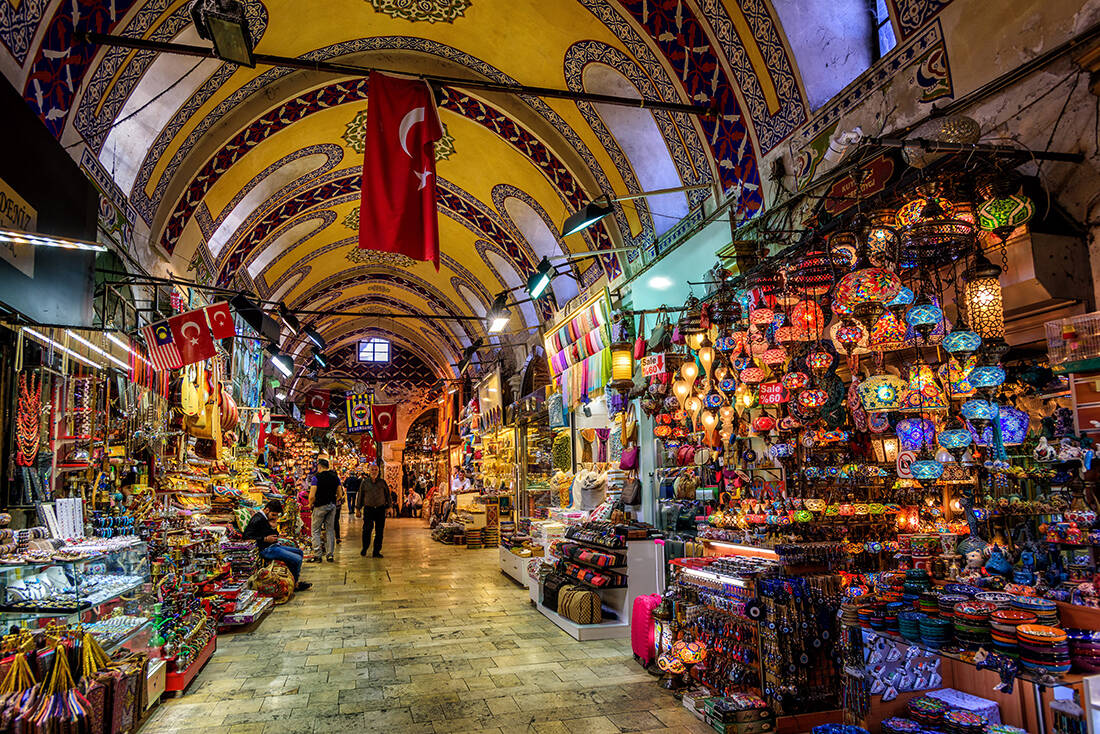
Istanbul has remained so important for so many centuries that everyone understood exactly what the City was. The Ottomans called it "Istanbul" in a 1760 firman, wanting it to be its official name, but it remained only on paper.
We had to reach the 20th century, in March 1930 in particular, to be renamed from the Turkish Republic to Istanbul. A few years earlier, in 1923, the Turkish National Assembly elected her Anchor as the capital of the newly formed Turkish Republic, in order to move away from the Ottoman heritage.
Istanbul was no longer the capital of a state. For the first time in 1.600 years…
